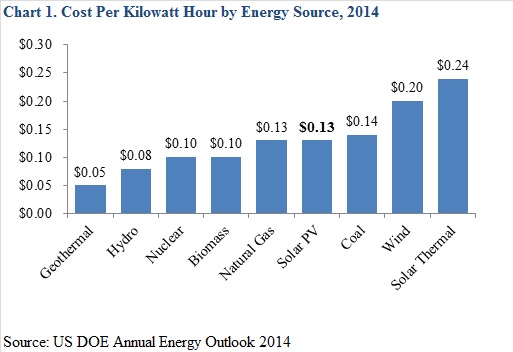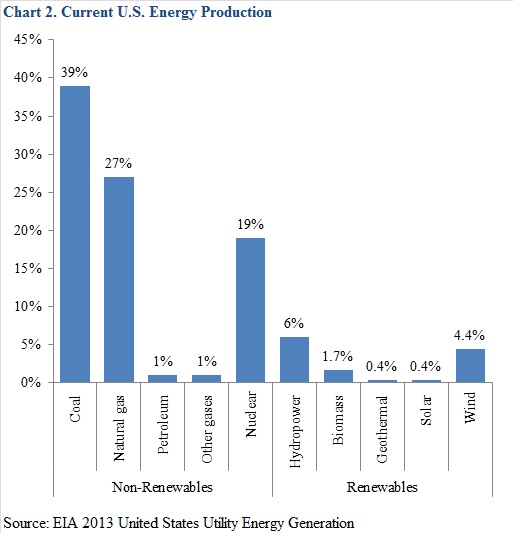Is a Solar Powered Future Realistic?
About the author: Joe Grochmal is an intern at AIER and is graduating from Great Barrington’s Monument Mountain High School in June. He will be attending Harvard in the fall to study economics and politics. Learn more about our internship programs here.
“Apple Investing $850 Million in California Solar Farm”
- Fortune Magazine, February 10, 2015
“China Speeds Up Solar Drive”
- The Wall Street Journal, April 20, 2015
“President Obama Unveils 75,000 Solar job Initiative”
- PV Magazine, April 7, 2015
Recent headlines suggest that after years of slow growth and marginal developments, solar energy may finally be poised to launch into the mainstream. Technological advances and global acceptance are making solar power more cost effective than ever before. As a viable economic alternative to traditional energy production, solar may be approaching a tipping point.
One of the most critical hurdles for the solar industry has been storing energy generated from solar panels. Solar panels only generate power when the sun is out. Utility companies point out that most home energy usage happens during evening hours. Battery storage is needed in order to store the power generated during the day for use at night. These batteries are costly and require regular maintenance.
This concern has been alleviated as Tesla is in the process of mass producing a new battery for home solar storage that comes with a 10 year warranty, provides up to 90 kilowatt hours of power, and is reliable, powerful, and more affordable than ever before.
The other great hurdle for solar energy has been its cost effectiveness as compared with traditional energy sources such as coal and natural gas. As solar has become more mainstream internationally, it has become more cost effective for consumers (Chart 1).
Current prices for solar power in the U.S. are comparable to natural gas and coal, and have become cheaper than wind energy. While solar does have a 30 percent government subsidy on installation, fossil fuel subsidies have increased over 45 percent since 2009. In the case of fossil fuels, subsidies come in many forms, ranging from subsidizing overseas fossil fuel projects ($37.5 billion in 2013) to spending billions annually to defend fossil fuel interests abroad. Fossil fuel subsidies have increased during the same period that that solar initiatives took hold in the United States.
The price for utility solar in the Southwestern United States is projected by the National Resource Defense Council to fall to five cents per kilowatt hour by 2020. Solar efficiency may just be hitting its stride. In December 2014, a joint French-German research team set a new world record by creating a solar panel with 46 percent efficiency. As technological breakthroughs continue, higher efficiency panels will become cheaper and more accessible to consumers, helping to further drive down costs.
Solar power currently comprises only about 0.4 percent of total U.S. power generation, a total of 12 Gigawatts (Chart 2). This means that there is huge potential for the United States to increase solar capacity. Globally, Germany (36 Gigawatts), China (18.3 Gigawatts with plans for 70 GW by 2017), and Italy (17.6 Gigawatts) lead the solar charge.
While there are some disadvantages surrounding solar such as its large upfront investment and substantial space requirements, solar research is making daily advances with regards to reducing panel size and reducing the upfront cost and payback time the investment.
Back in the 1940’s, who would have thought that computers could have fit in a small room? Today, let’s look out at a future with solar where our prognostication for improved efficiency may similarly fall short of the mark as human ingenuity and technological advancement drive down costs and improve performance.
Scientific progress in the future may offer progress that we cannot predict for this field today. However, three things are certain: Fossil fuels bring with them unstable prices and social stigma, markets and utilities are driven by supply and demand, and history has shown that human development and innovation should not be underestimated. Solar power may yet be a reality for America.










